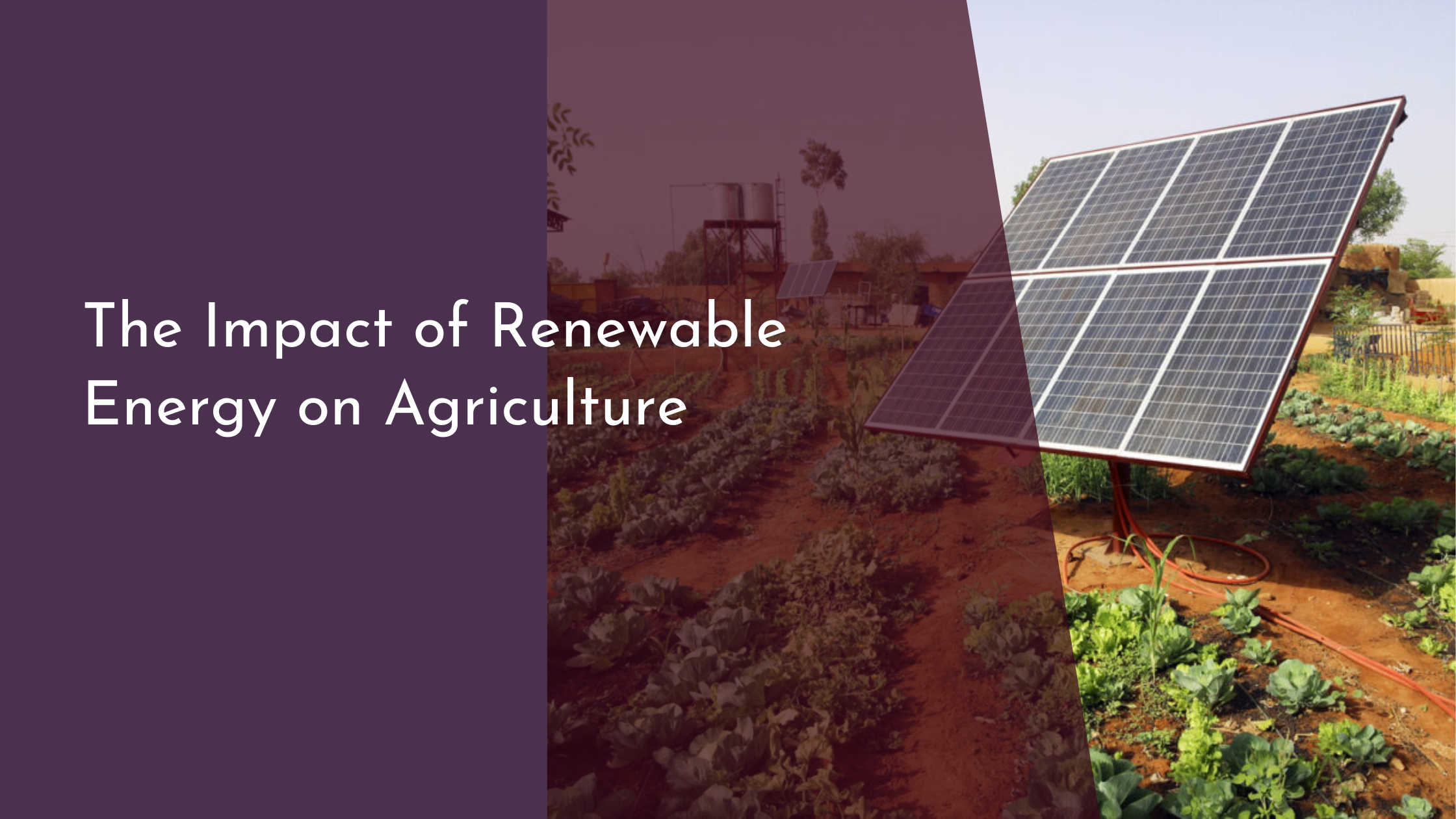The Impact of Renewable Energy on Agriculture
The integration of renewable energy sources into agriculture marks a significant transformation in the way farms operate, leading to enhanced efficiency and sustainability. As the world shifts towards cleaner energy solutions, the agricultural sector is embracing this change, reaping benefits that range from cost savings to environmental conservation. This article explores the impact of renewable energy on agriculture, focusing on solar and wind power, and highlights the promising future that lies ahead for the farming community.
Renewable Energy: A New Era for Agriculture
The agricultural industry is undergoing a revolution with the increasing adoption of renewable energy technologies. Traditionally reliant on fossil fuels, farms are now exploring sustainable alternatives to reduce their carbon footprint and improve operational efficiency. Renewable energy sources, such as solar and wind, are proving to be game-changers, offering farmers a cost-effective means to power their operations while promoting environmental stewardship.
This new era of agriculture isn’t just about reducing emissions; it also brings about enhanced resilience and economic benefits. By utilizing renewable energy, farmers can mitigate the risks associated with energy price volatility and supply disruptions. Moreover, these technologies often lead to significant cost savings in the long term, enabling farms to invest in other areas of production and innovation. As a result, the shift towards renewable energy is empowering farmers to create more sustainable and profitable agricultural practices.
Harnessing Solar Power for Farm Efficiency
Solar power is increasingly becoming a favored choice among farmers seeking to enhance efficiency and reduce operational costs. By installing solar panels on farms, agriculture businesses can generate their own electricity, which can be used to power equipment, irrigation systems, and even heating and cooling systems for livestock. This transition not only cuts down on electricity bills but also provides a reliable energy source that is less susceptible to fluctuations in the market.
Additionally, solar energy enables farmers to optimize land use by utilizing otherwise non-arable spaces, such as rooftops of barns and storage facilities, for solar installations. This dual-purpose approach allows farmers to maintain their primary agricultural operations while generating additional income through energy savings or by selling surplus energy back to the grid. The combination of reduced costs, increased energy independence, and additional revenue streams makes solar power an attractive option for modern farms.
Wind Energy: Turning Fields into Powerhouses
Wind energy is another renewable resource that is transforming agricultural landscapes into renewable energy powerhouses. Farms located in windy regions can install wind turbines to harness the kinetic energy of the wind, converting it into electricity for on-site use or for sale to the grid. This not only diversifies a farm’s income sources but also reduces reliance on non-renewable energy, contributing to a cleaner environment.
The installation of wind turbines on farmland can coexist with traditional agricultural practices, as turbines occupy minimal land space and allow for continued crop cultivation or livestock grazing around them. This synergy between renewable energy production and agriculture ensures that land productivity is maximized. Furthermore, the steady income generated from wind energy can provide financial stability to farmers, especially during poor harvest years, offering a buffer against economic uncertainties.
Conclusion: A Bright Future for Agriculture
The transition to renewable energy is paving the way for a future where agriculture is not only sustainable but also more resilient and economically viable. By adopting solar and wind energy, farmers are transforming their operations, reducing their environmental impact, and enhancing their profitability. The integration of renewable energy into agriculture is a testament to the industry’s commitment to innovation and sustainability.
As the global demand for food continues to rise alongside the need for clean energy, the agricultural sector’s shift towards renewable energy solutions holds immense promise. This transition not only bolsters the economic viability of farms but also protects the planet for future generations. With ongoing advancements in renewable technologies and supportive policies, agriculture is set to thrive in a sustainable and energy-efficient future, ensuring food security while contributing to a healthier environment.

